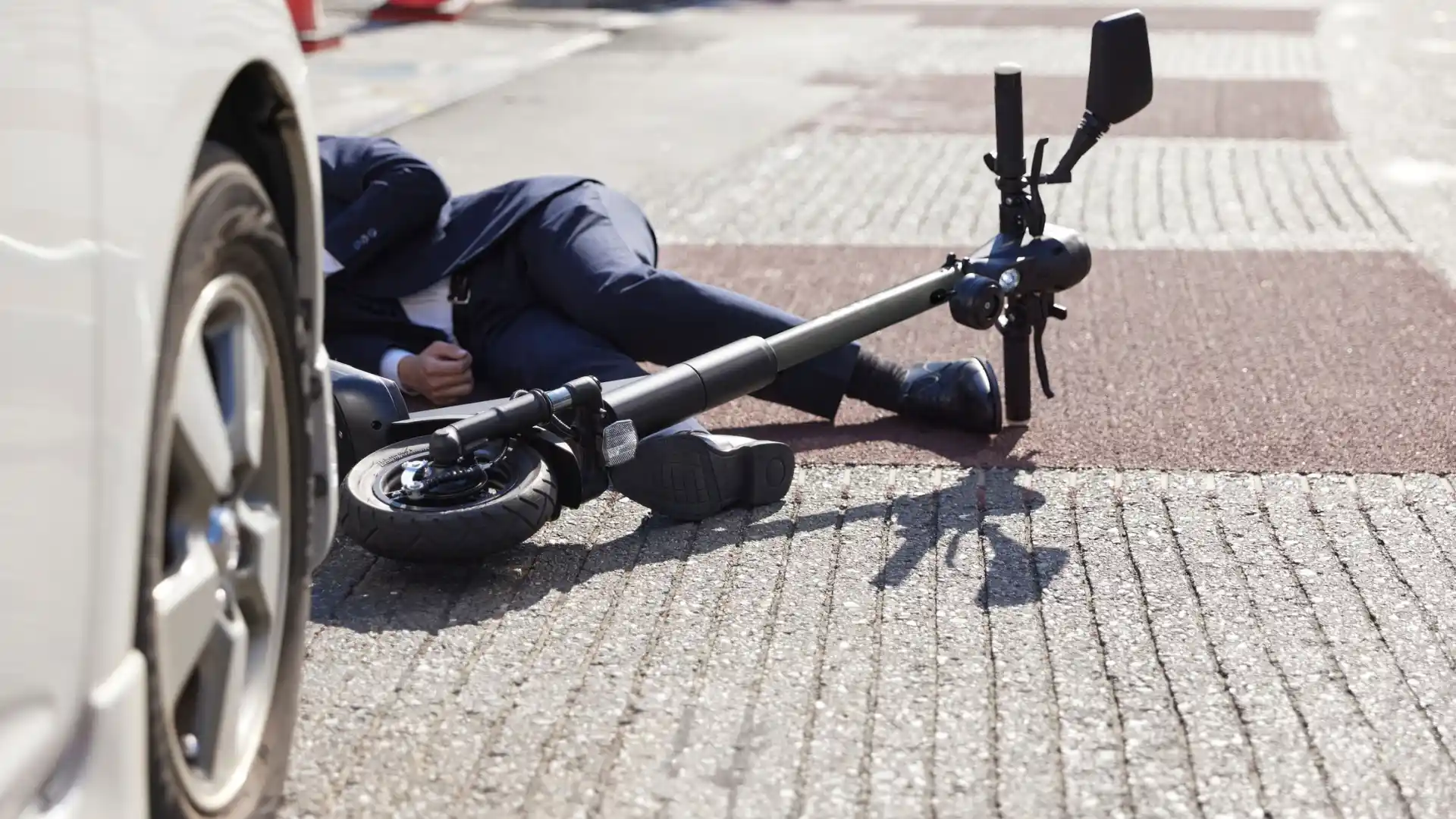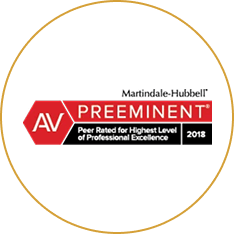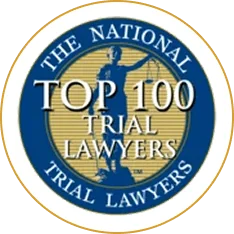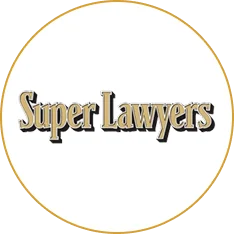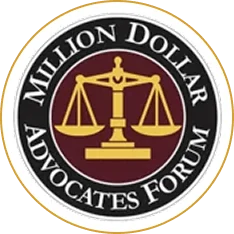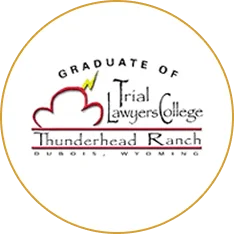You were injured in an accident, but the insurance company is saying you’re partially at fault. Does that mean you can’t recover anything? Not necessarily. South Carolina’s modified comparative negligence rule allows injured victims to still pursue compensation even if they share partial responsibility.
Understanding how this rule works is essential to protecting your rights, avoiding costly mistakes, and ensuring insurance companies don’t take advantage of you.
If you were hurt in an accident in Summerville and worry that your actions may affect your case, this guide explains everything you need to know — including how settlements are calculated, how fault is determined, what tactics insurers use, and why legal representation matters.
Contact Crantford Meehan online for a free case review or call (843) 832-1120. We are available to you 24/7.
Understanding South Carolina’s Modified Comparative Negligence Rule
South Carolina follows a modified comparative negligence system, which is codified in South Carolina Code § 15-38-15. This law fundamentally changes how accident victims can recover compensation when both parties share responsibility for an accident.
How You Can Recover Damages
Under South Carolina’s modified comparative negligence rule, a plaintiff can recover damages even if they are partially at fault for the accident. The key requirement is that the plaintiff must be less than 51% responsible for the accident. This means you can recover compensation as long as the other party bears at least 51% of the fault. Understanding this threshold is essential when pursuing a car accident settlement.
Modified Comparative vs. Pure Comparative Negligence
This system differs from other negligence approaches used in different states. Some states follow a “pure comparative negligence” rule, which allows plaintiffs to recover even if they are 99% at fault.
Modified Comparative Negligence vs. Contributory Negligence
Other states follow “contributory negligence,” which bars recovery entirely if the plaintiff is even slightly at fault. South Carolina’s modified comparative negligence rule strikes a middle ground, allowing recovery while still holding plaintiffs accountable for their own actions.
For example, if you’re injured in a car accident and determined to be 40% at fault while the defendant is 60% at fault, you can still recover compensation. However, your recovery will be reduced by your percentage of fault. This reduction mechanism is crucial to understanding how comparative negligence affects your final settlement amount. This is why working with a Summerville car accident lawyer is so important.
The 51% Threshold: What It Means for Your Settlement
The 51% threshold is the critical dividing line in South Carolina accident cases. Understanding this threshold can mean the difference between recovering substantial compensation and recovering nothing at all.
If you are found to be 50% or less at fault for the accident, you can recover damages from the other party. This is an important distinction because it means you can recover even in cases where fault is evenly split. However, if you are determined to be 51% or more at fault, you cannot recover any compensation from the other party, regardless of the severity of your injuries.
How Insurance Companies Try to Use It
This threshold creates significant incentive for defendants and their insurance companies to try to shift blame to you. Insurance adjusters and defense attorneys understand that if they can push your fault percentage above 50%, your entire claim disappears. This is why many accident victims find themselves in disputes with insurance companies over fault determination. Understanding how to prove fault in a car accident is critical to protecting your interests.
Consider these scenarios: If you’re 45% at fault, you recover. If you’re 50% at fault, you recover. If you’re 51% at fault, you recover nothing. The difference between 50% and 51% can mean the difference between a substantial settlement and zero recovery. This is why accurate fault determination is so critical in Summerville accident cases.
Settlement Negotiations
The 51% threshold also affects settlement negotiations. Insurance companies may offer lower settlements to accident victims who are close to the 51% threshold, betting that the victim will accept a reduced offer rather than risk losing everything if the case goes to trial and the jury assigns them more than 50% fault. Learning how to negotiate a car accident settlement can help you avoid this trap.
How Your Percentage of Fault Reduces Your Compensation
Once a court or insurance company determines your percentage of fault, that percentage directly reduces your total damages award. The calculation is straightforward: your total damages are multiplied by your percentage of fault to determine your final recovery.
The Recovery Formula
The formula works like this: Total Damages × (100% – Your Percentage of Fault) = Your Recovery
Let’s use a concrete example. Suppose you suffer $100,000 in total damages from an accident—including $30,000 in medical bills, $20,000 in lost wages, and $50,000 in pain and suffering. If you are determined to be 30% at fault for the accident, your recovery would be calculated as follows:
$100,000 × (100% – 30%) = $100,000 × 70% = $70,000
In this scenario, you would recover $70,000 instead of the full $100,000. The $30,000 reduction represents your proportional share of responsibility for the accident. Understanding how damages are calculated is essential when evaluating any settlement offer.
Damage Reduction
This damage reduction applies to all categories of damage. Your medical bills are reduced by the percentage of fault attributed to you. Your pain and suffering damages are reduced by your percentage of fault. There are no exceptions—every dollar of your claim is reduced proportionally.
Serious Injuries
The impact becomes even more significant in cases involving serious injuries and substantial damages. If you have $500,000 in total damages and are found to be 40% at fault, your recovery drops to $300,000. The $200,000 difference represents a substantial loss of compensation. This is why maximizing your personal injury settlement requires expert guidance.
This is why defendants and their insurance companies have strong incentive to maximize your assigned percentage of fault. Every percentage point they can shift to you directly reduces your recovery. Insurance adjusters understand this calculation intimately and use it strategically during settlement negotiations.
Determining Fault in Summerville Accident Cases
Fault determination is not a simple process. It requires thorough investigation, analysis of evidence, and often expert testimony. Understanding how fault is determined can help you protect your rights and ensure accurate fault assignment in your case.
Police Report
Fault determination begins with the police report. If law enforcement responded to your accident, the officer’s report documents the scene, statements from both parties, witness accounts, and the officer’s preliminary assessment of fault. However, the police report is not binding—it’s simply one piece of evidence in the fault determination process. Learning how to read an accident report can help you understand what information is critical to your case.
Physical Evidence
Physical evidence plays a crucial role in determining fault. Photographs of vehicle damage, road conditions, traffic signals, and the accident scene provide objective evidence of how the accident occurred. The location and severity of vehicle damage often indicates the point of impact and the direction of force, which helps reconstruct the accident sequence. Taking proper accident scene photos is one of the most important steps you can take immediately after an accident.
Video Evidence
Video evidence, when available, provides the most compelling proof of how an accident occurred. Traffic cameras, dash cameras, and surveillance footage from nearby businesses can definitively show which driver caused the accident. In Summerville, many intersections and commercial areas have video surveillance that can be critical to your case. Crantford Meehan has successfully used surveillance footage to strengthen accident claims for clients throughout the region.
Witness Statements
Witness statements provide eyewitness accounts of the accident. Neutral witnesses who have no connection to either party carry significant weight in fault determination. Their observations about traffic signals, vehicle speeds, and driver actions can corroborate or contradict the accounts provided by the parties involved. Knowing what questions to ask accident witnesses can help you gather critical evidence.
Accident Reconstruction
Accident reconstruction experts analyze the physical evidence and apply engineering principles to determine the cause of the accident. These experts examine vehicle damage, skid marks, road conditions, and other factors to reconstruct the accident sequence and determine which driver’s actions caused the collision.
Expert testimony carries substantial weight in complex accident cases. Accident reconstruction experts can provide the professional analysis needed to establish fault in disputed cases.
Medical Records & Injury Documentation
Medical records and injury documentation also play a role in determining fault. The nature and severity of injuries can indicate the point of impact and the force of the collision, which helps establish how the accident occurred.
Common Defense Tactics That Shift Blame to You
Insurance companies and defense attorneys employ sophisticated tactics to shift blame to accident victims. Understanding these tactics helps you protect yourself and avoid statements that could harm your claim.
Pre-Existing Conditions
One common tactic is claiming pre-existing conditions. Defense attorneys argue that your injuries existed before the accident or were caused by pre-existing medical conditions rather than the accident itself. They may request your complete medical history and use any prior injuries or health conditions to argue that the accident didn’t cause your current injuries. This tactic attempts to reduce the value of your damages claim by suggesting your injuries aren’t as severe as you claim. Understanding the impact of pre-existing conditions on car accident injury claims can help you counter this defense strategy.
Injury Severity
Another tactic involves downplaying injury severity. Insurance adjusters may suggest that your injuries are minor or that you’re exaggerating your symptoms. They might argue that you should have recovered faster or that your medical treatment was unnecessary. This tactic attempts to reduce your damages award by minimizing the impact of your injuries.
Accident Circumstances
Defense attorneys also misrepresent accident circumstances. They may argue that you were distracted, speeding, or failed to maintain proper lookout. They might claim you violated traffic laws or failed to take reasonable precautions. These arguments attempt to shift blame to you by suggesting your actions contributed to the accident. If you were injured in a distracted driving accident, understanding the legal implications is crucial.
Minor Traffic Violations
Insurance companies exploit minor traffic violations. If you received a traffic citation or violated any traffic law, defense attorneys will emphasize this violation and argue it contributed to the accident. Even minor violations can be used to argue that you bear some responsibility for the accident.
Distracted Driving
Another tactic involves suggesting plaintiff distraction or inattention. Defense attorneys may argue that you were texting, eating, adjusting the radio, or otherwise distracted when the accident occurred. They use this argument to suggest that you failed to maintain proper attention to the road.
Protect Yourself From Insurance Companies
Having legal representation protects you from these tactics. An experienced accident attorney understands defense strategies and knows how to counter them with evidence and expert testimony. The attorneys of Crantford Meehan have handled numerous accident cases and understand how to protect clients from unfair blame-shifting tactics. Our firm has recovered substantial settlements, including a $1 million settlement for clients struck by an 18-wheeler on I-26 near Summerville.
How Comparative Negligence Affects Insurance Claims
The claims process under comparative negligence requires careful handling. Understanding how to navigate this process protects your rights and maximizes your recovery.
Reporting Your Accident Objectively
When you report an accident to your insurance company, provide factual information about what happened. Describe the accident objectively without admitting fault or accepting blame. Provide the other driver’s information, witness contact information, and police report details. However, avoid making statements that could be interpreted as admitting fault. Dealing with insurance adjusters after a car accident requires careful communication.
Do Not Admit Fault
What you say to insurance adjusters matters significantly. Never admit fault, even partially. Avoid statements like “I should have seen the other car” or “I was going a little fast.” These statements can be used against you to assign you a higher percentage of fault. Instead, provide factual descriptions of what happened without accepting responsibility. Protecting yourself from insurance companies is essential to preserving your claim.
Be Cautious of Your Own Insurance Company
Your own insurance company may use comparative negligence against you. Even though your insurance company has a duty to defend you, they also have a financial incentive to minimize their payout. If your insurance company determines that you bear some responsibility for the accident, they may reduce your claim payout or deny coverage entirely. This is why it’s important to understand your policy and your rights.
Do Not Admit Fault
The importance of not admitting fault at the accident scene cannot be overstated. Statements made at the scene can be used against you in settlement negotiations and litigation. Even if you believe you were partially at fault, avoid making statements that admit fault. Let the investigation determine fault based on evidence rather than your statements.
Get Legal Representation Early
Involving an attorney early in the claims process protects your rights. An attorney can communicate with insurance adjusters on your behalf, ensuring that your statements are not misused and that your claim is handled fairly. Crantford Meehan offers free consultations to discuss your accident claim and explain your rights under South Carolina’s comparative negligence rule.
Proving Negligence in a Shared Fault Accident
Proving negligence requires establishing four elements: duty, breach, causation, and damages. In shared fault accidents, you must prove these elements while also defending against arguments that you bear responsibility for the accident.
Duty
The first element is duty. The defendant owed you a duty of care—a legal obligation to act reasonably and avoid injuring others. In car accidents, all drivers owe other drivers a duty to operate their vehicles safely and follow traffic laws. This element is typically straightforward in accident cases.
Breach
The second element is breach. You must prove that the defendant breached their duty of care by acting negligently or recklessly. This might involve proving that the defendant was speeding, ran a red light, was distracted, or violated traffic laws. Evidence of the defendant’s negligent conduct is critical to establishing breach. Evidence needed to prove your claim includes documentation of the defendant’s negligent actions.
Causation
The third element is causation. You must prove that the defendant’s breach of duty caused your injuries. This requires showing a direct connection between the defendant’s negligent conduct and the accident that injured you. Medical evidence and accident reconstruction often establish causation.
Damages
The fourth element is damages. You must prove that you suffered actual damages—injuries, medical expenses, lost wages, or other losses. Medical records, bills, and testimony establish the nature and extent of your damages. Tracking medical expenses is crucial for accurately documenting your damages.
Your Burden of Proof
In shared fault accidents, you must prove these elements while also defending against arguments that you contributed to the accident. The burden of proof in civil cases is “preponderance of the evidence,” which means your evidence must be more convincing than the defendant’s evidence. You don’t need to prove your case beyond a reasonable doubt—you simply need to show that your version of events is more likely true than the defendant’s version.
Expert Witnesses
Expert witnesses strengthen your case by providing professional analysis of the evidence. Accident reconstruction experts can testify about how the accident occurred. Medical experts can testify about the nature and extent of your injuries. These experts provide credible, professional opinions that support your case.
Why You Need an Experienced Summerville Accident Attorney
Comparative negligence cases are complex. Insurance companies employ sophisticated tactics to minimize payouts, and defendants use comparative negligence arguments to shift blame. Having experienced legal representation protects your rights and maximizes your recovery.
Knowing the Game With Insurance Companies
An experienced accident attorney understands how insurance companies operate and how to counter their tactics. Attorneys know which evidence is most persuasive, how to obtain critical evidence, and how to present evidence effectively. They understand how juries evaluate comparative negligence cases and how to present your case in the most favorable light.
Proven Record of Recovery
Crantford Meehan has extensive experience handling car accident cases in Summerville and throughout South Carolina. The firm’s attorneys have recovered substantial settlements for accident victims, including a $1 million settlement for clients struck by an 18-wheeler on I-26 near Summerville and a $2.35 million settlement in a tractor-trailer rear-end collision case.
Our Credentials
The firm’s attorneys bring significant credentials to your case. William C. Crantford holds an AV Rating from Martindale-Hubbell, the highest peer rating for legal ability and ethical standards. Jerry A. Meehan Jr. holds an AV Preeminent Rating. Both attorneys are Trial Lawyers College graduates, which means they have completed intensive training in trial advocacy and jury representation. Both attorneys are admitted to practice in South Carolina, the U.S. District Court for the District of South Carolina, and the U.S. Court of Appeals for the Fourth Circuit.
Crantford Meehan handles accident cases on a contingency fee basis, which means you pay no upfront costs. The firm only receives a fee if you recover compensation. This arrangement aligns the firm’s interests with yours—the firm is motivated to maximize your recovery because the firm’s fee depends on your recovery.
The firm maintains a Summerville office at 136 W Richardson Ave, Summerville, SC 29483, providing convenient access for Summerville residents. The firm offers 24/7 availability to discuss your accident claim and explain your rights. Contact Crantford Meehan at (843) 832-1120 to schedule your free consultation.
Frequently Asked Questions FAQ
Can I still recover if I’m partially at fault for the accident in Summerville?
Yes, under South Carolina’s modified comparative negligence rule, you can recover if you’re less than 51% at fault. Your compensation will be reduced by your percentage of fault. For example, if you have $100,000 in damages and are 30% at fault, you would recover $70,000. This is why understanding how car accident settlements work is important.
What happens if I’m found to be 51% or more at fault?
You cannot recover any compensation from the other party. This is why accurate fault determination is critical. The difference between 50% and 51% can mean the difference between a substantial settlement and zero recovery.
How is my percentage of fault determined?
Fault is determined through investigation of evidence, including police reports, photographs, video, witness statements, and accident reconstruction analysis. Insurance companies and courts review this evidence to assign fault percentages. Understanding how long it takes to settle a car accident claim can help you plan accordingly.
Will admitting fault at the accident scene affect my settlement?
Yes. Statements made at the scene can be used against you in settlement negotiations and litigation. Avoid admitting fault, even partially. Instead, provide factual descriptions of what happened and let the investigation determine fault based on evidence.
How much will my settlement be reduced if I’m partially at fault?
Your total damages are multiplied by your percentage of fault. If you have $100,000 in damages and are 30% at fault, you recover $70,000. If you’re 40% at fault, you recover $60,000. Every percentage point of fault reduces your recovery proportionally.
Can insurance companies use comparative negligence against me?
Yes. Insurance adjusters may try to assign you a higher percentage of fault to reduce their payout. Having legal representation helps protect against this tactic. An attorney can communicate with insurance adjusters on your behalf and ensure your claim is handled fairly.
What evidence should I collect at an accident scene?
Collect photographs of vehicle damage, road conditions, traffic signals, and the accident scene. Get contact information for witnesses. Note the police report details. Seek medical attention and keep records of all medical treatment. This evidence supports your claim and helps establish accurate fault determination.
Contact Crantford Meehan for Your Free Consultation
If you’ve been injured in an accident in Summerville and are concerned about how comparative negligence might affect your claim, contact Crantford Meehan for a free consultation. The firm’s experienced attorneys will review your case, explain your rights under South Carolina’s comparative negligence rule, and discuss your options for recovery.
Crantford Meehan serves Summerville and the surrounding areas from offices in Charleston, Summerville, and Florence. The firm handles accident cases on a contingency fee basis, meaning you pay no upfront costs. Call (843) 832-1120 today or schedule your free consultation online. Our firm offers 24/7 availability to discuss your accident claim.



